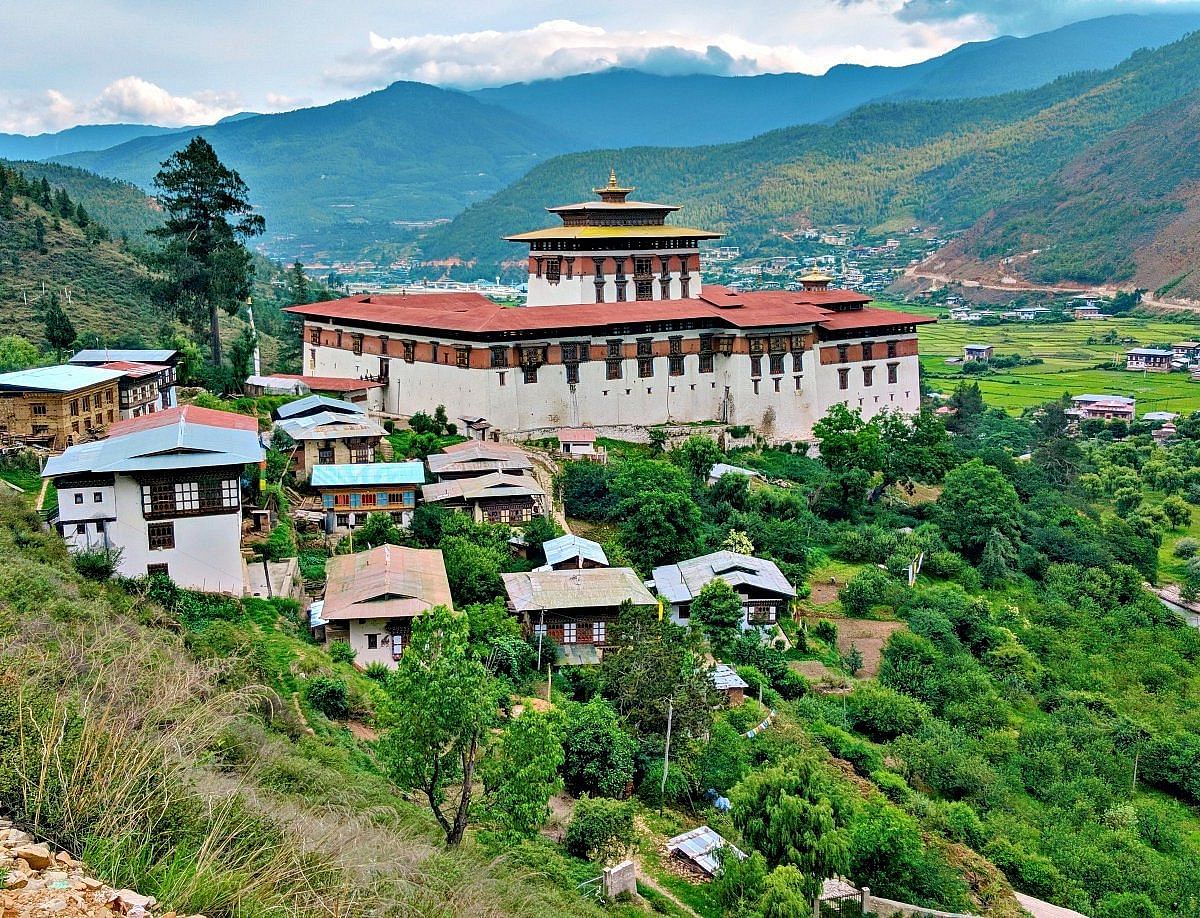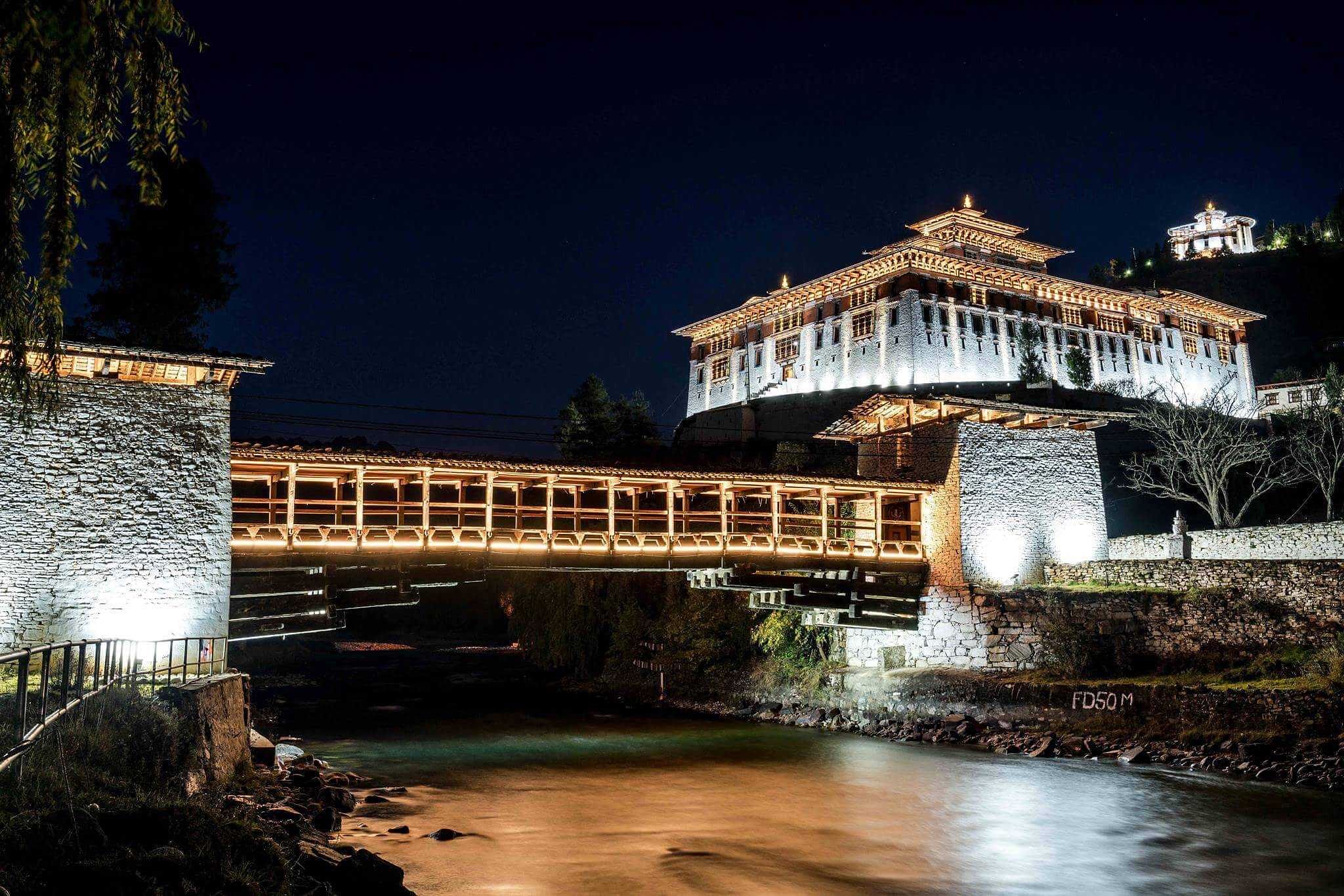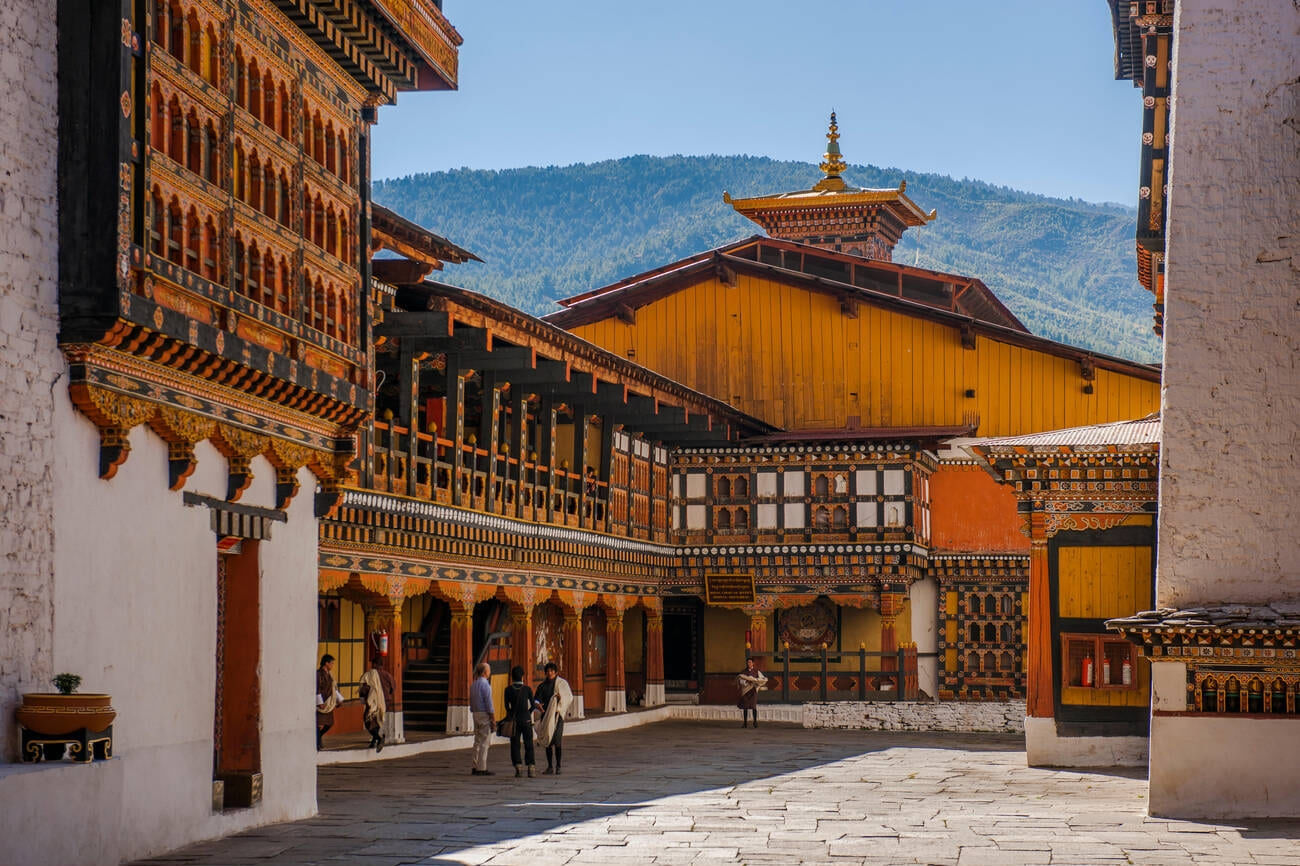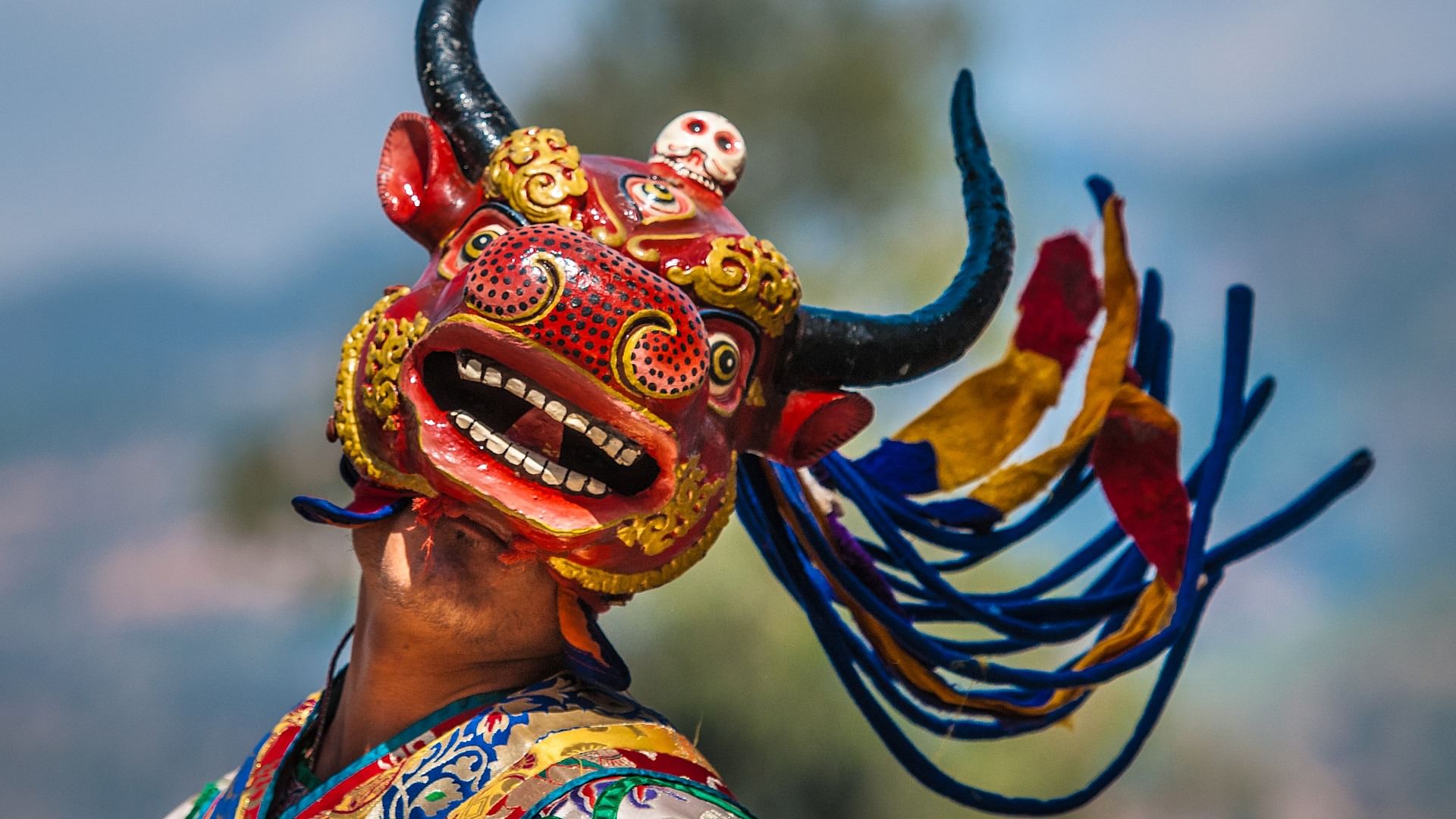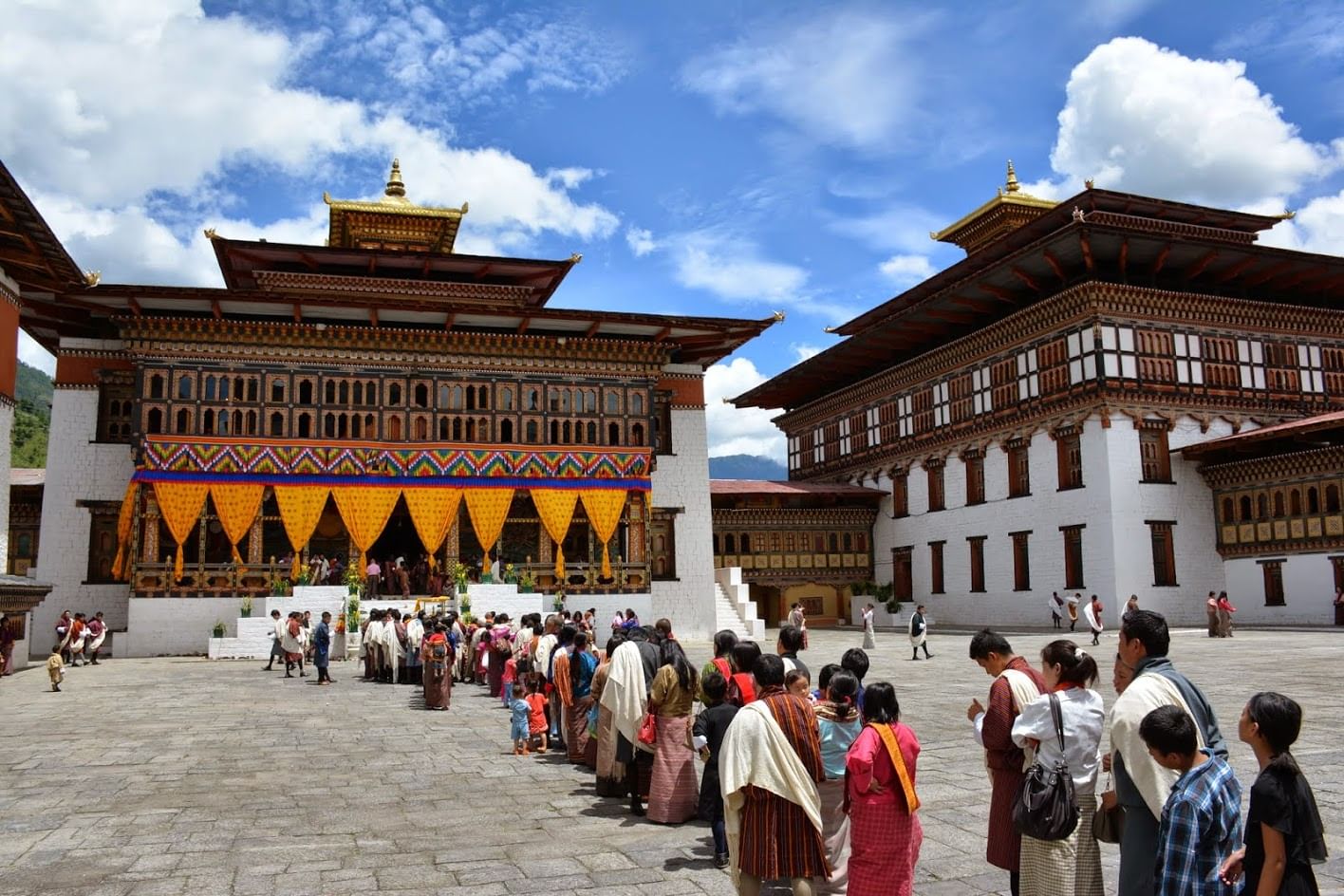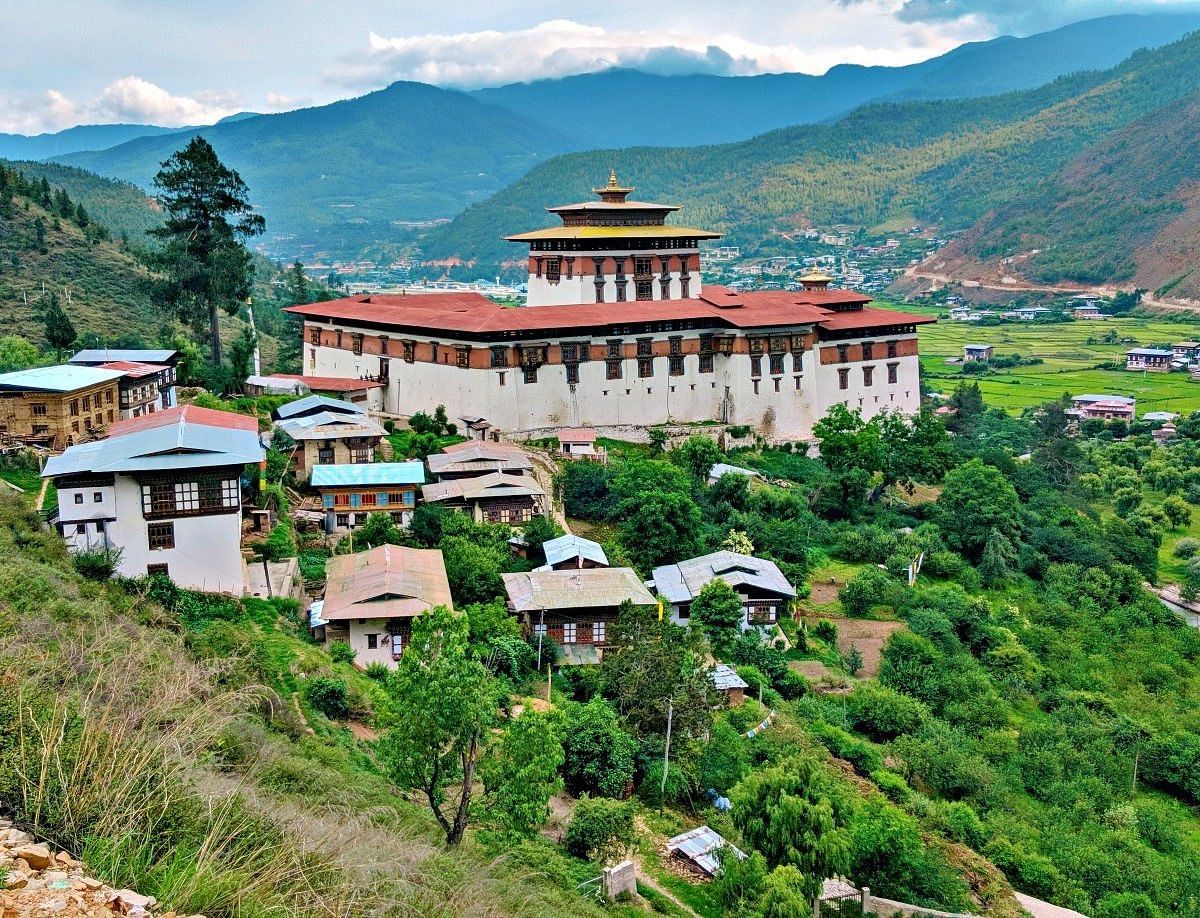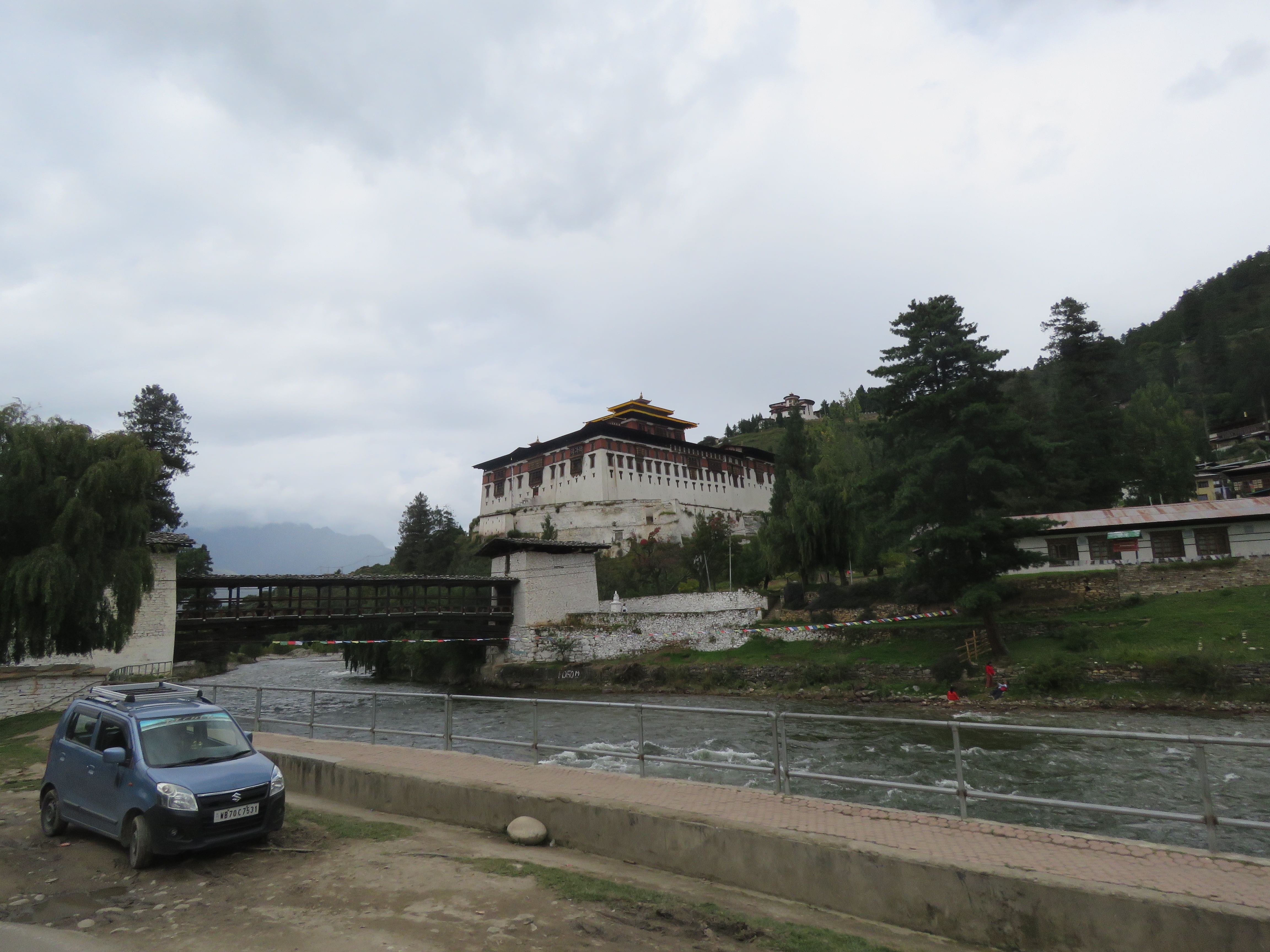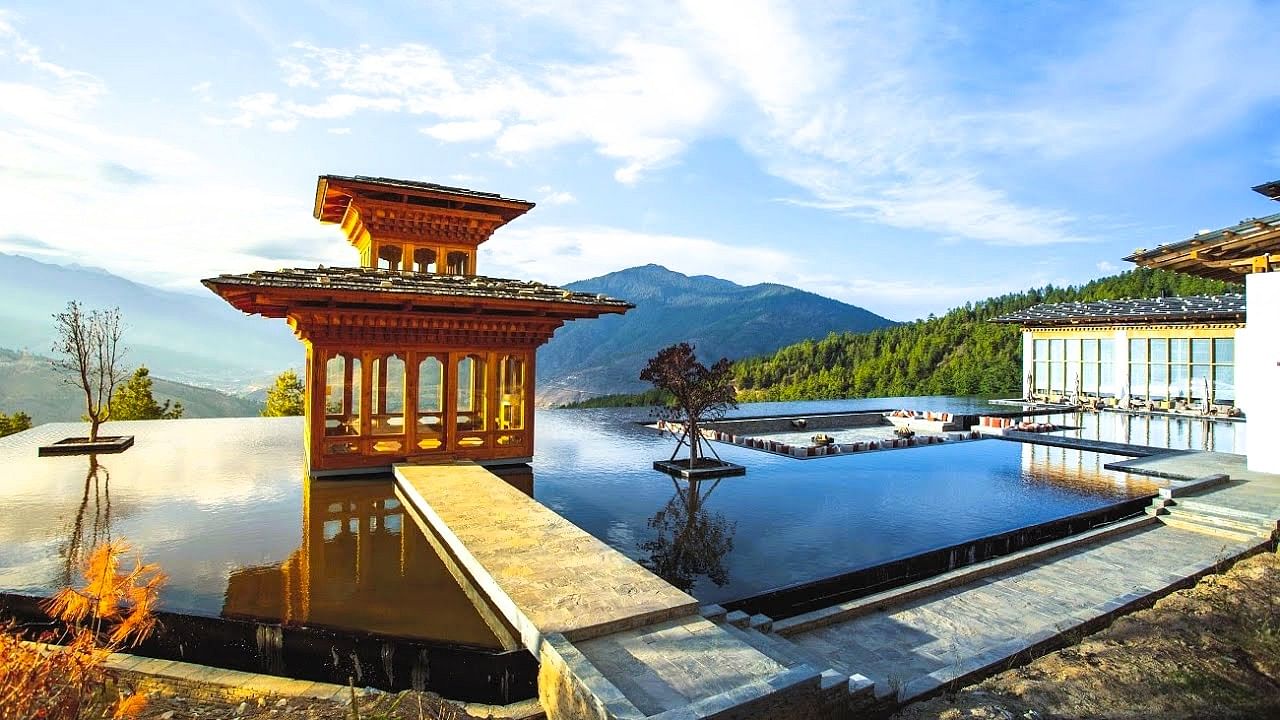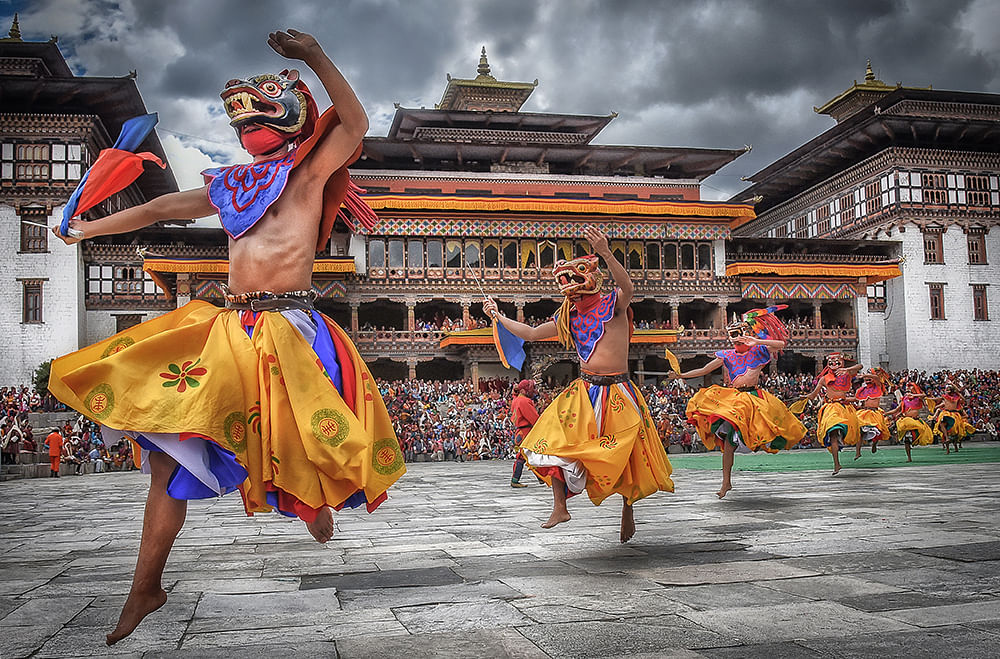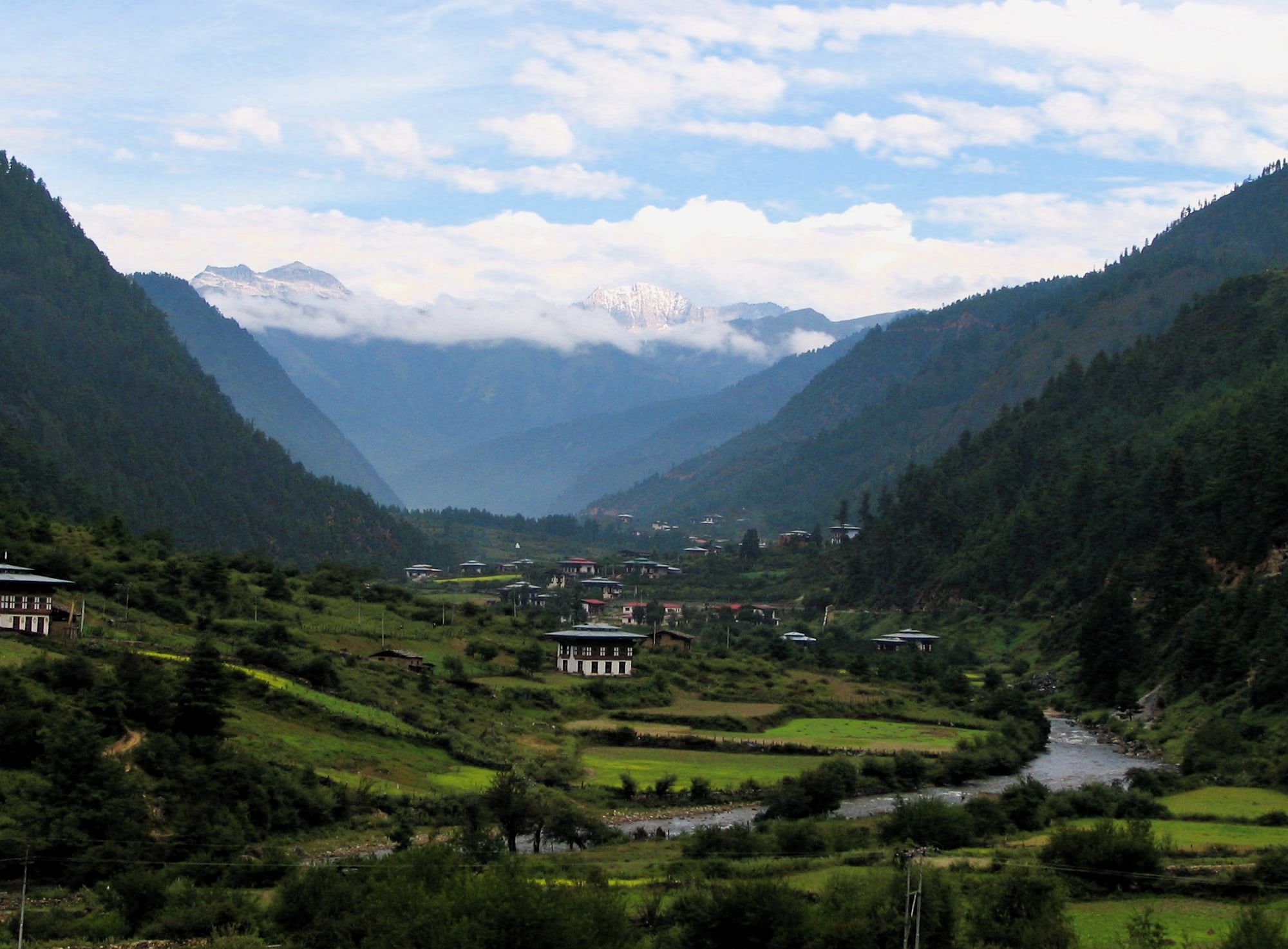Rinpung Dzong is a massive fortress that sits above Paro Valley. You can't miss it-the thing's huge and white and just dominates the landscape. They built it way back in 1644, and get this, people still use it. Monks live there, government folks work there. It's not some abandoned relic.
To get in, you walk across this wooden bridge that creaks under your feet. The courtyards inside are surprisingly big. Monks walk past you, going about their day. If you're lucky enough to be there during Paro Tsechu, the place goes crazy with dancing and festivities. Everyone shows up.
Look, when people list places to visit in Bhutan, this one's always there. And yeah, it deserves the hype. The wood carvings are ridiculously detailed, the old paintings are everywhere, and the whole vibe is just different from your typical tourist spot.
Check out our Bhutan Tour Packages if you want to see it properly. Having a guide makes sense here because otherwise you're just walking around, not really understanding what you're looking at. It's definitely worth your time if you're in the area.
- Location: Paro Valley, Bhutan
- Opening hours: 9:00 AM to 6:00 PM daily
- Entry fee: ₹500 per person, ₹250 below 18 years, no charge below 5 years
- Built by: Zhabdrung Ngawang Namgyal (1644–1646)
- Earlier site: Hungrel Dzong (15th century)
- Famous for: History, architecture, festivals, and scenic views
- Festival: Paro Tshechu (March/April)
- Best Time to Visit: March–May and September–November
- Nearest Airport: Paro International Airport (10 minutes away)
- Nearby Attraction: Ta Dzong (National Museum of Bhutan)
best selling bhutan tour packages
A Short History of Rinpung Dzong, Bhutan
The Rinpung Dzong history is as fascinating as its looks. Long ago, in the 15th century, a small temple stood on this hill. It was built by a lama (a Buddhist monk) named Drung Drung Gyal.
Later, in 1644, Zhabdrung Ngawang Namgyal, the great leader who united Bhutan, decided to build a grand fortress in its place. This became the Rinpung Dzong we see today.
The dzong was not just a monastery. It was also a fortress to protect the Paro Valley from enemies. Over time, it became a centre for both religious and government activities. Monks prayed here, while officials worked from the same complex - all in harmony.
Even after hundreds of years, Rinpung Dzong still stands tall, holding stories of monks, kings, and villagers who once walked its courtyards.
Architecture of Rinpung Dzong
The architecture of Rinpung Dzong is one of the finest examples of Bhutanese craftsmanship. What makes it even more impressive is that it was built without using a single nail!
The builders used stone, wood, and clay to create this masterpiece. Its tall whitewashed walls rise above the Paro River, crowned with red-banded roofs and golden towers.
Inside, you’ll find beautiful courtyards, wooden balconies, and intricately painted walls showing scenes from Buddhist stories. The colours - red, gold, blue, and green - are all symbolic and bring the walls to life.
The main tower, called the Utse, stands proudly at the centre. It represents wisdom and spiritual strength.
A traditional wooden bridge known as Nyamai Zam Bridge crosses the Paro River and connects the town to the dzong. Walking across it feels like stepping into another world - with prayer flags fluttering and the sound of the river below.
Just above the dzong sits the Ta Dzong, a round watchtower built in 1649 to protect Rinpung Dzong. Today, it serves as the National Museum of Bhutan, filled with art, relics, and old photographs that tell the story of the country.
Festivals at Rinpung Dzong
One of the most colourful and famous events in Bhutan happens right here - the Paro Tshechu Festival.
This festival takes place every spring (March or April) and celebrates the life and teachings of Guru Rinpoche, the saint who brought Buddhism to Bhutan.
During the festival, monks and locals wear beautiful silk robes and colourful masks to perform Cham dances - special dances that tell stories about good and evil, wisdom, and faith.
The highlight of the festival is the unfurling of a Thongdrel, a massive religious painting that covers the side of the dzong. It’s said that just looking at it can bring blessings and wash away one’s sins.
The Festivals at Rinpung Dzong are not just performances - they are spiritual celebrations that bring the entire community together in joy, prayer, and colour.
Things to Do Near Rinpung Dzong
When you visit Rinpung Dzong, make sure to explore the many beautiful and peaceful spots nearby. Here are some things to do near Rinpung Dzong:
- Walk Across Nyamai Zam Bridge – This charming wooden bridge offers stunning views of the dzong and the river. It’s perfect for photos, especially during sunrise or sunset.
- Visit Ta Dzong (National Museum of Bhutan) – Just a short walk above Rinpung Dzong, this circular building was once a watchtower. Now it’s filled with art, textiles, and relics that showcase Bhutan’s history.
- Explore Paro Town – A short walk from the dzong, Paro town is full of small shops, cafés, and friendly locals. You can try traditional food like Ema Datshi (chilli and cheese) or buy handmade souvenirs.
- Hike to Tiger’s Nest Monastery (Taktsang) – This world-famous Tiger's Nest monastery sits on a cliff high above the valley. It’s one of Bhutan’s most sacred sites and offers views after a scenic hike.
- Enjoy Paro River Views – Take a peaceful walk along the riverbanks near the dzong. The sound of flowing water and the view of the fortress make it a perfect spot to relax.
Each of these experiences helps you understand the beauty and calmness that make Bhutan so special.
Best Time to Visit Rinpung Dzong Bhutan
The best time to visit Rinpung Dzong Bhutan, is during spring (March–May) and autumn (September–November).
- Spring: The Paro Valley blooms with colourful flowers, and the famous Paro Tshechu Festival is held around this time.
- Autumn: The weather is cool and clear, making it great for photography and outdoor walks.
- Winter (Dec–Feb): It can get cold, but the snow-covered mountains look magical.
- Summer (Jun–Aug): The monsoon brings rain, but the valley turns bright green and fresh.
So, if you want good weather and beautiful views, spring and autumn are the best seasons to plan your trip.
How to Reach Rinpung Dzong Bhutan
Reaching Rinpung Dzong is quite easy because it’s located in Paro, one of the most accessible and popular towns in Bhutan. The dzong sits on a hill overlooking the Paro River, just a few minutes from the main town centre.
By Air
- Fly into Paro International Airport - this is Bhutan’s main international airport.
- From the airport, Rinpung Dzong is located just about 6 km away.
- The drive from the airport to the dzong is short, making it very convenient for travellers.
By Road (from Paro town)
- Rinpung Dzong is easily accessible from Paro town. Several sources state a walk from town takes about 15–20 minutes.
- A taxi or local car can also take you from Paro town to the dzong if you prefer not to walk.
Tips for Visiting Rinpung Dzong
Here are some simple tips to make your visit smooth and respectful:
- Dress Modestly: Wear clothes that cover your arms and legs. Avoid shorts or sleeveless tops.
- Remove Shoes: You must take off your shoes before entering the temples inside the dzong.
- No Photos Inside: Photography is allowed outside, but not inside the temple halls.
- Stay Quiet and Respectful: This is a working monastery. Avoid loud conversations and always be polite.
- Visit Early: Morning and late afternoon are the best times to enjoy soft light and fewer crowds.
Visiting Rinpung Dzong Bhutan feels like stepping into a story where time stands still. The fortress, with its ancient walls and gentle monks, tells stories of courage, faith, and peace.
As you leave and look back across the wooden bridge, you’ll see the dzong glowing softly in the sunlight - strong, beautiful, and timeless.
Bhutan teaches that happiness comes from balance, kindness, and respect for nature. Rinpung Dzong is the perfect example of that wisdom.
So when you visit Bhutan, don’t miss this jewel of Paro Valley - Rinpung Dzong, the “Fortress on a Heap of Jewels,” where beauty, history, and peace live together in perfect harmony.




